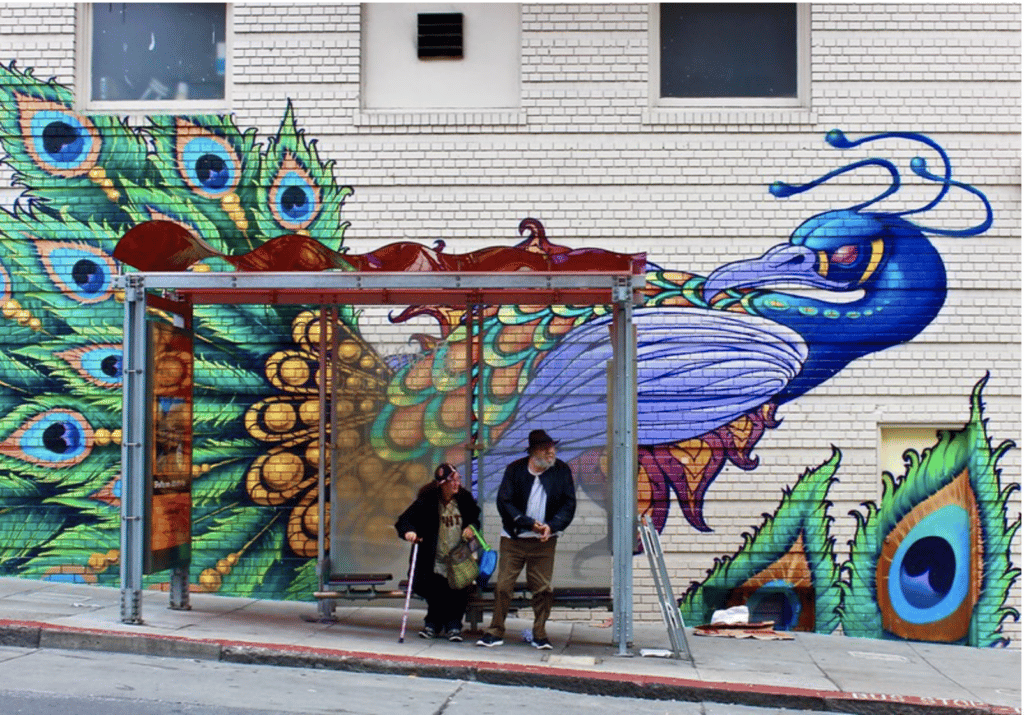
San Francisco Mayor, London Breed. (credit: Eric Risberg/AP)
The saga of London Breed’s destructive term in office continues with the mayor’s latest scheme to shut down the open-air drug bazaar that is the Tenderloin at night. Desperate to do anything but actually fix the problems plaguing San Francisco’s Tenderloin District, Mayor Breed is threatening to punish the bodegas and corner stores that keep the area’s residents alive.
New legislature drafted by London Breed would force stores within a twenty-block zone to close at midnight or face fines of $1,000 for every hour of business conducted after 12 AM. Stores would be permitted to reopen at 5AM. Breed’s no-go zone, if passed by the city’s Board of Supervisors, would stretch east-to-west Jones Street to Polk; north-to-south from McAllister to O’Farrell Streets.
In a press release, the Mayor’s Office calls the 20-block area a “small part of the Tenderloin.”
Mayor Breed had this to say: “Tenderloin residents, businesses, and workers deserve safe streets not just during the day, but also at night. The drug markets happening at night in this neighborhood are unacceptable and must be met with increased law enforcement and new strategies.”
Her idea isn’t difficult to understand. Mayor Breed blames late-nite smoke shops, liquor stores and bodegas for attracting illicit substance users and dealers to the district. Her watering-hole logic assumes that by drying up what she sees as the main attraction, the animals will wander elsewhere. Would it stop there? Will she shut down more stores once she realizes crowds are forming one block north on Geary Street, or south of Market and McAllister? No word yet on whether Breed plans on closing the city’s bars in an effort to curb alcoholism. It’s a gentrifier’s mindset. “Don’t solve the problem, just move it.”
UPDATE: Breed’s curfew would not apply to bars, restaurants or music venues: spaces one must pay to occupy for a short time.

Tenderloin Peacock Mural by artist Darwin Bell.
Store owners within Mayor Breed’s proposed curfew zone are rightfully furious. The impact of her plans would jeopardize rents on their storefronts and their homes. I live inside the mayor’s market blackout square. My corner store guys know me by name and I theirs. Their daughters come in for candy and hugs after school, right when I’ve woken up from a late night working the bar and need more Frosted Mini Wheats. Their store would go dark from midnight to five AM for one year if the pilot were put into effect.
Local Journalism for Working stiffs
We write for the poets, busboys, and bartenders. We cover workers, not ‘tech’, not the shiny ‘forbes 100 bullshit’. We write about the business on your corner and the beer in your hand. Join the Bay's best newsletter.
I’m usually off work by 3 AM, when I buy what is often my first meal in several hours from their to-go section. I can’t really cook something that late because my partner and I live in a studio and he wakes up early to teach. Late-nite operations serve more people than dealers and their customers. They’re there for new moms who run out of diapers or formula in the middle of the night. They’re open for old folks who don’t sleep as much anymore and get a big dose of daily interaction from the clerk. These spots don’t cater to criminals. They are a vibrant, vital part of San Francisco’s urban tapestry, and they aren’t responsible for conditions in the Tenderloin.
I want to jam a used needle into the over-ballooned idea that some people deserve homes while others don’t. Much of California’s housing crisis (funny occurrence just there; the instant I hit the H-key after “California,” my word processor auto-predicted “homeless population”) can be traced to this ideology. An on-the-ground approach to addiction treatment has to be hospitable to the reality of tapering off, relapse, withdrawals, and the fact that a small but mighty percentage of people are just fine with their substance use. They don’t see a need for help, only housing—and yes, they deserve it.
I’m willing to bet that most unhoused people, given a place to live, would gladly take their use off the streets and out of sight. Then I wonder how many of those people would still feel compelled to go on using like they do now they’ve been returned a home, a job they like, a community they know, the tools they need. It’s a radical idea, and it certainly would dry up the need for dealers haunting the neighborhood, but it won’t make the policy-maker much richer or foster formidability among their opponents and subordinates. Therefore, it doesn’t appeal to London Breed.
One night at my corner store, I asked one of the owners what he thought of the mayor’s idea.
He shrugged behind the counter. “I mean, what can you do?”
The post Mayor London Breed Threatens Curfew on Tenderloin Businesses appeared first on Broke-Ass Stuart's Website.









